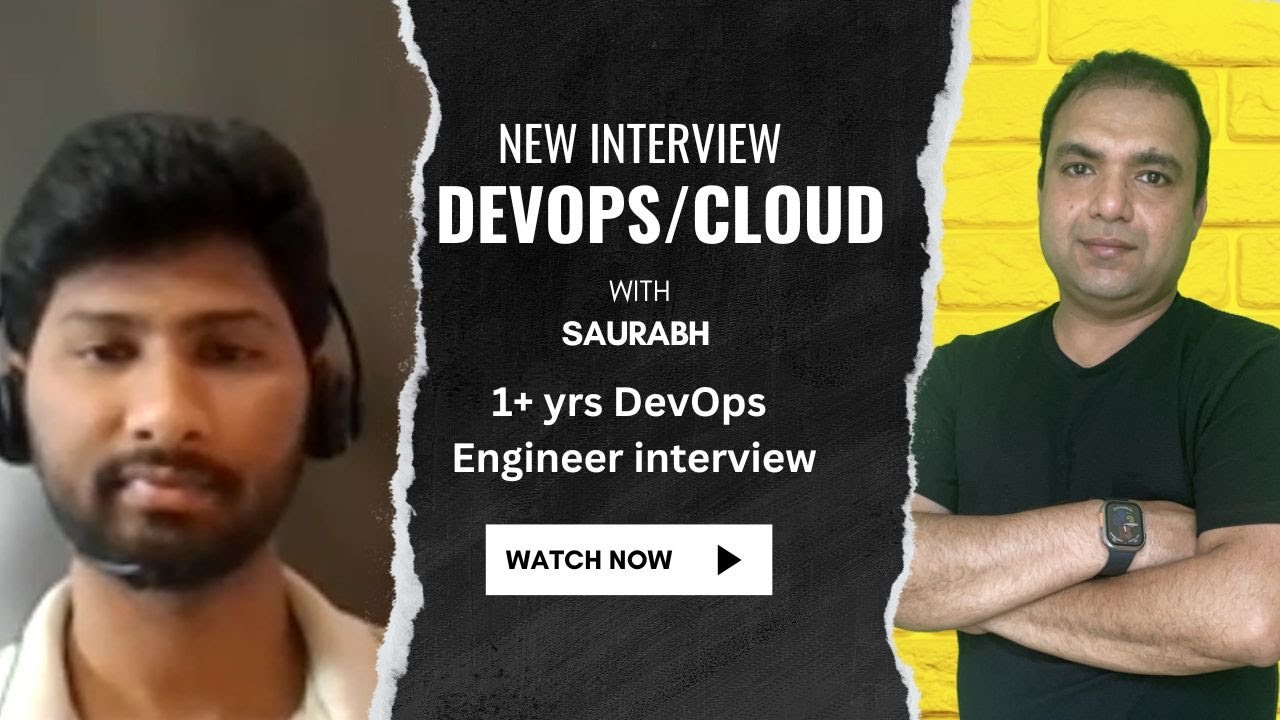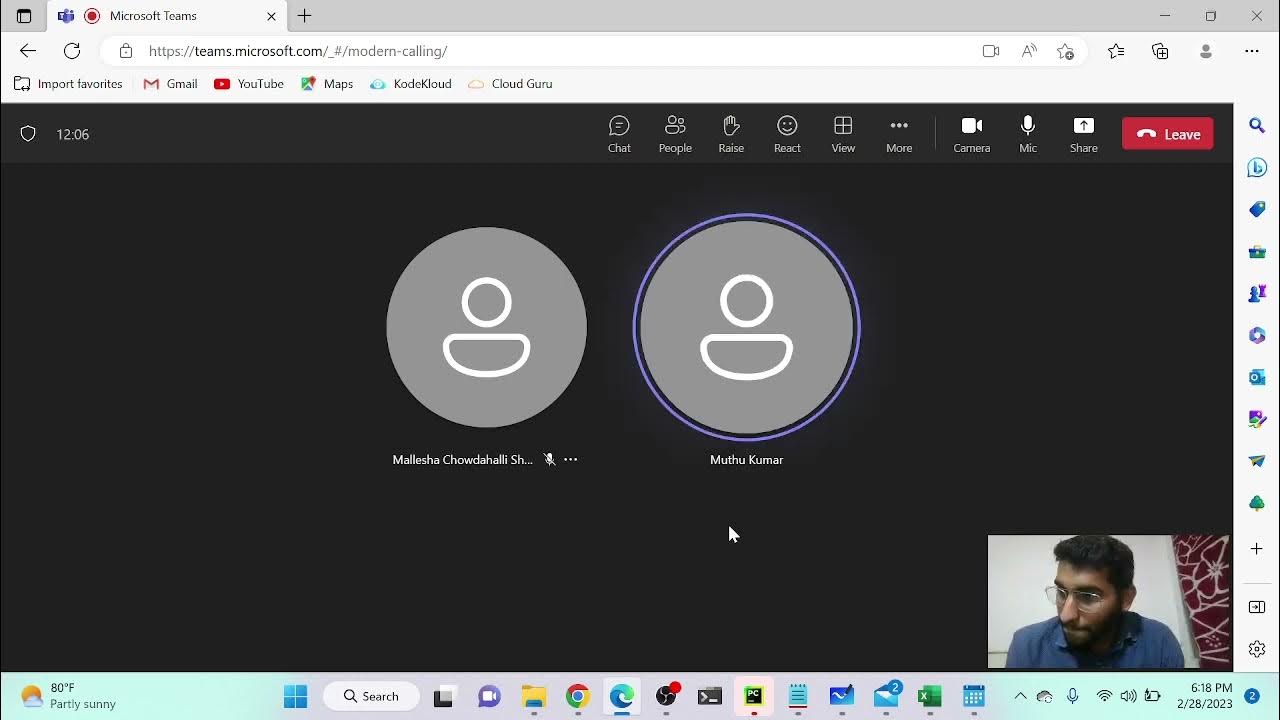Excellent Devops and Cloud Engineer Interview questions for ~2 Year Experience including feedback
Summary
TLDRIn this interview, Harish, a DevOps engineer with over two years of experience, discusses his role in a network communication project using AWS services and Jenkins pipelines. He shares insights on managing different AWS environments and touches upon security practices and cost optimization. The interviewer provides feedback on Harish's understanding and suggests exploring certifications and broader AWS knowledge to enhance his consulting skills for future roles.
Takeaways
- 😀 Harish, a DevOps engineer from Hyderabad, has been working in the IT space for two and a half years and is currently working on a network communication project in a microservices architecture.
- 📚 Harish graduated in 2021 and started his career with AWS training, progressing to a Junior DevOps engineer role, and is experienced with AWS services such as EC2, VPC, and S3.
- 🛠️ Harish has practical experience in writing Docker files and Jenkins pipeline files, which are instrumental in building Docker images and automating the deployment process.
- 🔄 The project Harish is involved in uses GitHub for data storage and Git as the version control system, emphasizing the importance of version control in DevOps practices.
- 🤝 Harish has had limited direct interaction with clients, mainly participating in internal pipeline calls, indicating a need for more client-facing experience in a consulting role.
- 🔍 The interview explores Harish's understanding of AWS environments and deployment strategies, revealing that he has primarily worked within development environments rather than production.
- 🚀 Harish's role involves managing network elements with a GUI for network administrators, showcasing the significance of user interface design in system administration.
- 💡 The interview highlights the need for cost optimization strategies, suggesting that Harish should explore AWS Lambda functions for potential cost savings.
- 🔒 Security is a critical aspect of Harish's role, with the use of security groups, network ACLs, and IAM policies to ensure the protection of AWS resources.
- 🔍 Harish has used SonarQube in the pipeline for code quality and vulnerability checks, underlining the importance of code quality in the development process.
- 📈 The interview suggests that Harish should broaden his knowledge beyond his current role, consider obtaining AWS certifications, and gain a deeper understanding of various AWS services and best practices.
Q & A
What is Harish's current role in his IT career?
-Harish is currently working as a DevOps engineer in a project that involves network communication and is based on microservices.
What AWS services is Harish experienced with?
-Harish has expertise in various AWS services, including EC2, VPC, S3, and he has experience in writing Docker files and Jenkins pipeline files.
What is the project Harish is working on about?
-The project Harish is involved in is a network communication project for a US-based company, which provides a UI for network administrators to manage customer services.
How does Harish's team manage different AWS environments for development, staging, and production?
-They use a multi-branching strategy with different pipelines for each branch, and they use AWS to create instances for developers to test their code locally.
What version control system does Harish's team use?
-Harish's team uses Git as their version control system, storing all data in GitHub.
What is the role of an AWS technical consultant at Infosys?
-The role involves working with multiple customers, solving their problems, understanding their situations, identifying gaps in their systems, and implementing solutions based on automation or consulting skills.
How does Harish handle deployments from different branches in his current project?
-Harish uses different pipelines for different branches, with the main branch having a separate pipeline for production and feature branches having their own pipelines.
What is Harish's experience with AWS Lambda and serverless functions?
-Harish has created AWS Lambda serverless functions, primarily for tasks that don't require a server to remain active after execution, such as cost optimization.
What security measures does Harish implement in his project?
-Harish implements security measures such as configuring security groups, network access control lists, proper IAM permissions, bucket policies, and multi-factor authentication.
What feedback does the interviewer provide to Harish regarding his understanding and experience?
-The interviewer suggests that Harish has a high-level understanding of areas he has worked on but struggles with areas outside of his experience. The interviewer recommends exploring certifications and gaining a broader understanding of various scenarios.
What advice does the interviewer give Harish for improving his consulting skills?
-The interviewer advises Harish to go beyond his current role, explore different options, get certified, and build projects outside of his organization to gain experience in various scenarios.
Outlines

Dieser Bereich ist nur für Premium-Benutzer verfügbar. Bitte führen Sie ein Upgrade durch, um auf diesen Abschnitt zuzugreifen.
Upgrade durchführenMindmap

Dieser Bereich ist nur für Premium-Benutzer verfügbar. Bitte führen Sie ein Upgrade durch, um auf diesen Abschnitt zuzugreifen.
Upgrade durchführenKeywords

Dieser Bereich ist nur für Premium-Benutzer verfügbar. Bitte führen Sie ein Upgrade durch, um auf diesen Abschnitt zuzugreifen.
Upgrade durchführenHighlights

Dieser Bereich ist nur für Premium-Benutzer verfügbar. Bitte führen Sie ein Upgrade durch, um auf diesen Abschnitt zuzugreifen.
Upgrade durchführenTranscripts

Dieser Bereich ist nur für Premium-Benutzer verfügbar. Bitte führen Sie ein Upgrade durch, um auf diesen Abschnitt zuzugreifen.
Upgrade durchführenWeitere ähnliche Videos ansehen

DevOps Interview For Experience : First Round Selected

Excellent interview with a DevOps engineer with one year's experience

How To Learn Devops In 2025 | DevOps Full Roadmap (with resources)

Interview of Smart Fresher who got 2 DevOps jobs #devops #freshers #freshersjobs #devopsjobs #cloud

How I Failed ₹20 LPA devops interview | Live recording

Day-19 | Jenkins ZERO to HERO | 3 Projects Live |Docker Agent |Interview Questions | #k8s #gitops
5.0 / 5 (0 votes)
